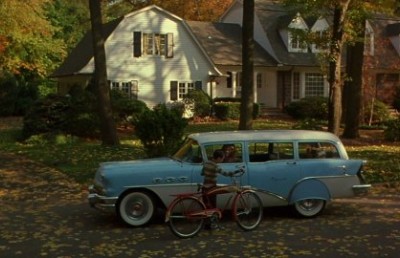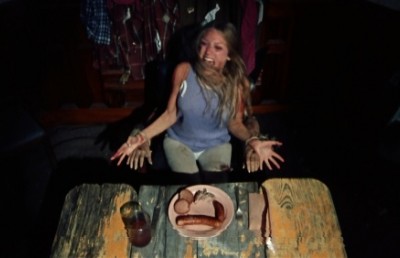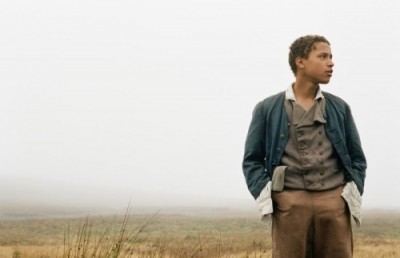“Not in my Movie”: The 90s Slasher Cycle and Grrrl Power
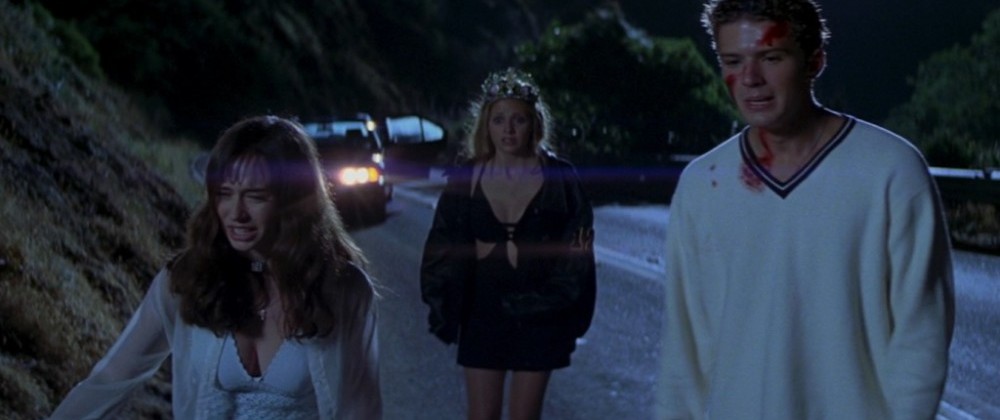
Since terrified global audiences turned out in droves to catch John Carpenter’s benchmark horror film Halloween (1978) making it one of the most profitable independent films ever made, the slasher film has been a lucrative and essential part of the film industry. After its over-saturated, sequel-heavy heyday in the 1980s, few industry experts could have foreseen what the years between 1996 and 2000 would bring in terms of resurrecting the formula while simultaneously bringing in new fans and setting new box office records. Yet the slasher films of the late 1990s differed from what came before: they were made after the rise of third wave feminism, particularly the Riot Grrl movement and the more mainstream Girl Power movement, young women were becoming the focus of popular culture in ways that hadn’t been seen before. 1
Beginning with Wes Craven’s 1996 sleeper hit Scream, film studios – Dimension Films in particular – began to churn out slasher films for the next three years. These films formed a cycle in their own right, picking up on the near-ritualistic execution of slasher tropes which had been mined repeatedly throughout the 1980s. The almost four year cycle, which emerged in late 1996 with the release of Scream and lasted into 2000 with the release of Scream 3 and Cherry Falls, was a minor cultural phenomenon, one that sought to reignite the cache of slashers in the teen market but also make films that focused on the trials and tribulations of young women. Their popularity stemmed from the fact that these films called into question the very rituals which were thought to make up a slasher and subverting them, but also because these films focused on the young women at the center of these films, the Final Girls. The slasher film, so named in part due to the weapons of choice and intimate kills, has been a large part of getting teens and young adults into cineplexs for the last several decades. Carol J. Clover coined the term in her 1992 book Men, Women and Chainsaws: Gender in the Modern Horror Film as follows:
The image of the distressed female most likely to linger in memory is the image of the one who did not die: the survivor, or Final Girl. She is the one who encounters the mutilated bodies of her friends and perceives the full extent of the proceeding horror and her own peril; who is chased, cornered, wounded; whom we see Scream, stagger, fall, rise and Scream again. She is abject terror personified. If her friends knew they were about to die only seconds before the event, the Final Girl lives with the knowledge for long minutes or hours. She alone looks death in the face, but she alone also finds the strength either to stay the killer long enough to be rescued (ending A) or kill him herself (ending B) (Carol Clover, p. 35).
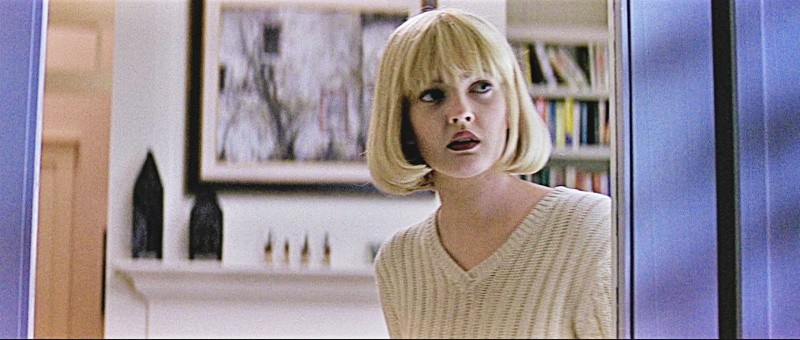
Scream
The Final Girl in the slashers of the 1970s and 1980s was a conduit who guided the audience through the macabre funhouse the killer created out of her friends. In the slasher cycle of the 1990s, however, the horror was localized in the lives of the Final Girls. They were not interlopers into the killer’s world, their personal histories were the sites of horror; something they either created or were born into. Scream, I Know What You Did Last Summer (Jim Gillespie, 1997), Scream 2 (Wes Craven, 1997), I Still Know What You Did Last Summer (Danny Cannon, 1998), Urban Legend (Jamie Blanks, 1998), Halloween: H20 (Steve Miner, 1998), Scream 3 (Wes Craven, 2000), and Cherry Falls (Geoffrey Wright, 2000) make up the 1990s slasher cycle and all share remarkably similar traits. The Final Girls of this cycle were the products of third wave feminism, 90s alternative culture and the more mainstream “Girl Power” which allowed the focus to shift to the female protagonist, her friends and their survival. This is a marked difference to the previous focus on iconic killers –Jason Voorhees, Freddy Krueger, Michael Myers and Leatherface- who many horror fans grew up with, an interchangeable rogue’s gallery of men (and women such as Angela from Sleepaway Camp or Carrie White in Carrie) who had beefs with their Final Girls.
Stephen Neale states in his book Genre and Hollywood that a film cycle is “a group of films within a specific and limited time-span, and founded, for the most part, on the characteristics of individual commercial successes” (Stephen Neale, p. 1). Richard Nowell further articulated Neale’s point in his book Blood Money: A History of the First Teen Slasher Film Cycle elaborating on the defining traits which came to be iconic emblems of the slasher film stating that from the years 1974-1981 slashers contained a “story structure that could be articulated differently and combined with content drawn from a variety of sources and which enabled filmmakers not only to provoke audience horror, but also to entice intrigue, thrills and amusement” (Richard Nowell, p. 18). Within this structure can be found reliable slasher elements which Clover delineates as the killer’s point of view shot, young people engaging in sex and other ‘risky’ behavior that leads them to becoming unwilling victims, the main setting of the film revealed to be a ‘terrible place’, an unseen or unknowable killer whose identity is tied to the location and a phallic weapon.
The slasher films of the 70s and 80s were revered by fans but (at the time at least) were derided by mainstream film critics. Conservatives criticized the films’ transient morals, depictions of sex and consumption of drugs and alcohol. Liberals insisted that the problematic depictions of women as either virgins or whores limited their agency. The mechanics of marketing also fed into this trend. The original theatrical posters of films such as Friday the 13th (Sean S. Cunningham, 1980), Halloween and A Nightmare on Elm Street (Wes Craven, 1984) prominently depict the killer instead of the threatened youths who, if they appeared at all, were either scantily clad women 2 or representations of abject terror. 3 From their initial plot lines to their almost endless sequels these films positioned the antagonists as iconic anti-heroes.
The 80s were a time of great innovation in practical and special effect techniques which also anchored the villain as a more watchable and entertaining spectacle than his banal, vapid victims who seemed to become more generic with each passing film. John Kenneth Muir writes in his book Horror Films of the 1980s that “[slashers of the ‘80s] invited viewers to voyeuristically enjoy nudity and gore, but then slapped them down for doing so, warning that such ‘dangerous’ behavior could result in an untimely death” (John Kenneth Muir, p. 8.). The slashers of the ‘80s were following the ideology set by the Ronald Regan administration and in doing so made the majority of the young victims of these films painfully obtuse when it came to their own safety. As a viewer, it was smarter to align with the killer than the victims.
By the end of 1996, the first marketing push for Scream entered the market. Emblazoned on the poster was the film’s hip, young cast – clean and refined, gazing back at their potential audience. The cast, a mix of fallen film stars, upstarts and beloved television personalities banked far more on the audience’s investment in them rather than the killer’s iconography or location. The ‘90s slasher relied on the teen audience recognizing and identifying with television stars that they were watching regularly at home. While Halloween featured Jamie Lee Curtis, the daughter of Psycho star Janet Leigh, she was not in the homes of America in the same way Courtney Cox (who had just found mainstream fame with the NBC sitcom Friends) or Neve Campbell who was part of the ensemble cast of Fox’s Party of Five marking Scream as familiar yet slightly dangerous. This trend would continue with the casting of Sarah Michelle Gellar (of the television series Buffy, the Vampire Slayer) in both I Know What You Did Last Summer and Scream 2; Jennifer Love Hewitt also in Party of Five in I Know What You Did Last Summer as well; Alicia Witt of Cybill, Joshua Jackson of Dawson’s Creek and Jared Leto of My So-Called Life all in Urban Legend. These were not the young unknowns of slasher’s heydays who were just getting their first breaks; these were bonafide television stars whose box office draw was their face, a face the teen audiences were already familiar with and rooting for.
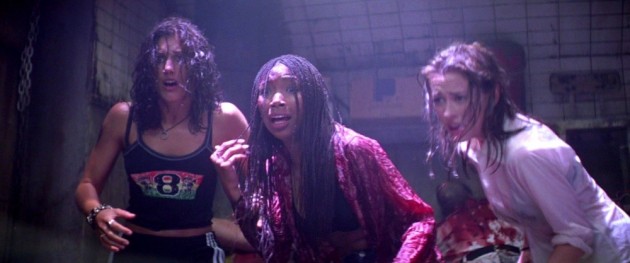
I Still Know What You Did Last Summer
While the slashers of the late 70s and 80s featured a set of standard tropes, location was a defining trait; whether it be a summer camp or small town, tropes were tweaked to suit each setting. Aesthetically, filmmakers favored wide shots of many of their iconic scenes to capture the horror occurring. From Halloween’s Laurie Strode’s frantic screams for help in a suburban neighborhood, to Alice in Friday the 13th’s lackadaisical canoe ride, to the multiple dreamscapes inhabited by Freddy Krueger, slashers sought to align themselves with a more commercial, mainstream notion of the ‘cinematic’ in an effort to shed the low-budget, DIY aesthetic of the horror films which came before them. While there are certainly moments of great beauty in films such as Night of the Living Dead (George Romero, 1968) and The Texas Chainsaw Massacre (Tobe Hooper, 1974), as first-time filmmakers and due to varying constraints (particularly budgetary), these movies tended to keep the horror wound tightly within the frame. As Timothy Shary explains of 1980s slasher:
Consider that in the Reagan era (1981-1989), a new notion of American conservatism was sweeping the country, and horror films about wild youth were replaced by less metaphorical narratives about youth actually enjoying the pleasures of rebellion and sensuality…. [P]erhaps the overdone violence of so many slasher films brought an entertaining glamour (Timothy Shary, p. 165).
While slashers reached dizzying heights of cultural influence among both mainstream and genre fans in the 1980s, by the early 1990s they were on their last legs. The Nightmare on Elm Street franchise wound down with the clunky Freddy’s Dead: The Final Nightmare (Rachel Talalay, 1991), Jason’s heart crawled out his body (which the government exploded) to find new victims before eventually heading into space in Jason X (2001) and Michael Myers was forced to face his own ever changing, murky history. 4 Horror in the early 1990s was the Wild West: there were no rules, but lots of action. For every success– Army of Darkness (Sam Raimi, 1992), Candyman (Bernard Rose, 1992) and Wes Craven’s New Nightmare (Wes Craven, 1994)– there were plodding retreads which were as fleeting for audiences as they were at the box office.
As mainstream culture moved into the 1990s not only did America tire of the conservative politics and fear mongering of Ronald Reagan but a new generation of women were entering their teens and twenties, women who had grown up with the feminist movement and sought to see it progress even further, this was the beginning of third wave feminism.
The movement of third-wave feminism is said to have arisen out of the realization that women are of many colors, ethnicities, nationalities, religions and cultural backgrounds. With this wave of feminism what can be seen is a desire to challenge or avoid the assumption that there is a universal female identity and over-emphasizing of the experience of the upper-middle class white woman (J.A. Fisher).
The young women of third wave feminism sought to be the subject and creator (rather than the object) of the media they consumed. One of the emblems of feminism during this era was the underground Riot Grrrl movement. Riot Grrrl, which saw the formation of all-female or mostly-female bands such as Bikini Kill and Heavens to Betsy, was born in the late 1980s and early 1990s in the West Coast of the United States. These bands combined aggressive music with political activism and fought to control the portrayal of their image with an emphasis on the creation of zines (a self-made, self-published, inexpensively made magazine on topics as varied as favorite bands and performers to politics to personal experiences). These zines were sold, traded and distributed by their creators among a network creating an alternative media to the mainstream, encouraging those who felt on the outside of popular culture to contribute and in doing so, create their own culture. As the London Riot Grrrl Manifesto stated: “Riot Grrrl is a network of women and men who want to change society through active & creative means – writing zines, being in bands, creating websites, making art” (British Library). The movement grew and thrived in the underground and eventually the mainstream media took notice.
When the British girl group the Spice Girls became a world-wide phenomenon with their hit Wannabe in 1996, their proclamation of “Girl Power!” followed shortly thereafter. While the Spice Girls were in many ways the antithesis of Riot Grrrl (they were created by male executives and were seemingly enslaved by endorsement deals) their Girl Power moniker as well as the messaging in many of their songs did share similar values with Riot Grrrl – they were sex-positive and, more than anything, promoted the power of female friendship over boy-chasing. As writer Maeve McDermott noted in the series The ‘90s: The Last Great Decade:
[W]hile the Spice Girls may have cashed in selling girl power to their highly captive audience, accompanying their sugary sweetness were genuine messages of empowerment, presenting a multi-racial group of friends who adhered to different standards of beauty and valued their female relationships separate from those with men. As it turns out, while the Spice Girls were selling out arenas and starring in movies, they were achieving something more revolutionary than anyone could have expected: taking the concept of girl power and, with a grin and a peace sign, injecting it into mainstream culture (Maeve McDermott).
This kind of mainstream inclusion of a narrative created or fronted by women seemed scarily new. In Backlash: The Undeclared War Against American Women Susan Faludi writes of the misogynistic leanings of mainstream cinema in the 1980s:
In typical themes, women were set against women; women’s anger at their social circumstances was depoliticized and displayed as personal depression instead; and women’s lives were framed as morality tales in which the “good mother” wins and the independent woman gets punished. And Hollywood restated and reinforced the backlash thesis: American women were unhappy because they were too free; their liberation had denied them marriage and motherhood (Susan Faludi, p. 126).
The slasher films of the late 1990s set about to overtly appeal to the female audience who the film industry was willing to acknowledge were buying movie tickets, soundtracks and other assorted items tied to films. These films featured women with agency over their own lives, sexualities and strengths. As Shary suggests of the cultural changes of the slasher film in the 90s versus the 80s, “the roles of youth in this sub-genre are an indicator of their development within films that initially afforded them a minimal sense of identity and now offer them extraordinary identities” (Timothy Shary, p. 167). The slashers of the 1980s offered their viewers a bacchanal of sex and violence – focusing on elaborate deaths and fantastic practical effects with minimal attention paid to the backstory and emotional state of the Final Girl let alone the other women in the films. For every Final Girl there were several of her friends who were sliced and diced due to their own silliness or sexuality. As Klaus Reiser writes in his essay Masculinity and Monstrosity: Characterization and Identification in the Slasher Film:
[These female victims] are useful as titillation, as teasers, and are then, in a classical projective manner, taken to task for it … One can also read the girls’ sexual interest as diverging from their textual role. By trying to attain sexual pleasure, they depart from the horror film’s single-minded preoccupation with loss, separation, castration, expulsion, and terror. That is, they are punished for “behaving out of genre,” enabling the film first to cross over into more sexualized realms only to return “safely to violence” right away. … The Final Girl is indeed an ambivalent and theoretically challenging phenomenon that disrupts mainstream characterization practices. … It is usually the screen male to whom the active role and the power to drive the story are assigned, while the female functions primarily to support that desire. That … also holds true for the Final Girl. After all, we do not get to experience her desire but only the desire of the monster for her (Klaus Rieser, p. 376-377).
In the late 90s, slashers would expand the very characters that 80s horror took for granted. By tying the site of horror directly to the would-be victims, the ‘90s slasher would create a template in which the freedom, survival and desire of the Final Girl (as well as her friends) was dependent on subduing the killer.
Released in December 1996, Scream would change the horror landscape. Optioned by Dimension Films (a subsidiary of Miramax Films whose mandate was to win as many Oscars as studio boss Harvey Weinstein could carry), written by then unknown screenwriter Kevin Williamson and directed by horror icon Wes Craven, little was expected of the film. When Scream premiered, Roger Ebert commented: “the movie itself, for all of its ironic in-jokes, also functions as a horror film – a bloody and gruesome one, that uses as many clichés as it mocks” (Roger Ebert). Ebert’s astute point would go on to define an entire movement in youth subculture culture for several years; these films would not just work by being scary, they had to acknowledge audience expectations.
Scream follows a group of teens in Woodsboro, California who are being stalked and killed by an assailant who has a penchant for subjecting victims to taunting phone calls, testing their horror film knowledge. The Final Girl in Scream is Sidney Prescott (Neve Campbell) who has dealt with her own tragedy the year prior when her mother was raped and killed. While the other characters embrace their knowledge of films in hopes of staying alive, Sidney constantly eschews film tropes and references, fearing that no happy ending truly exists.
In perhaps Scream’s most iconic scene Randy (Jamie Kennedy) sets out the rules for the slasher film which his circle of friends seem to find themselves trapped in:
Randy: There are certain RULES that one must abide by in order to successfully survive a horror movie. For instance, number one: you can never have sex. [crowd boos] BIG NO NO! BIG NO NO! Sex equals death, okay? Number two: you can never drink or do drugs. The sin factor! It’s a sin. It’s an extension of number one. And number three: never, ever, ever under any circumstances say, “I’ll be right back.” Because you won’t be back.
As Randy provides a crude Cliff’s Notes version of Clover’s Men, Women and Chainsaws, the film cuts between Randy talking to his peers and Sidney about to lose her virginity to her boyfriend Billy (Skeet Ulrich) who has been under suspicion throughout the film. It is in this scene that Sidney embraces filmic terms saying to Billy:
Sidney: But this is life. This isn’t a movie.
Billy: Sure it is, Sid. It’s all a movie. It’s all one great big movie. Only you can pick your genre.
Sidney: Why can’t I be a Meg Ryan movie? Or even a good porno.
The killer attacks Sidney once again and in the climax of the film, it is revealed to be two killers behind the murders – Billy and their friend Stu (Matthew Lillard). After mocking Sidney, Billy reveals that he and Stu also raped and murdered Sidney’s mother the year before. After bloody showdown in which Billy and Stu attempt to cover their tracks, Sidney escapes and traps them in their own game, calling them, disguising her voice and in one of the biggest acts of defiance in the slasher narrative the Final Girl, Sidney dons the Ghostface costume attacking and brutally killing Stu and Billy with the help of Randy and tabloid reporter Gale Weathers (Courtney Cox). In the final moments of the film Sidney picks up the gun which Billy and Stu wielded earlier as Randy says:
Careful. This is the moment when the supposedly dead killer comes back to life, for one last scare.
[Billy lunges towards them]
Sidney: [shoots Billy] Not in my movie.
In this moment, Scream breaks the mold of the slasher film. Sidney succumbed to the lure of viewing her life through the lens of mainstream (Meg Ryan) or subculture references (pornography) indulging her desire for Billy only to be taunted by his reveal as one of the killers. There is no win or gain for Sidney in playing a pre-formed role, she must create her narrative. Even when Billy springs to life for his “one last scare,” Sidney is unfazed as her gaze is as direct as the gun shot to Billy’s head. Director Wes Craven frames the shot pulling from Billy’s jump scare to Sidney’s assured face, a demarcation in derivation from the presumed narrative which would allow the killer to continue their reign in a sequel.
Sidney’s definitive stance of “not in my movie” offers a reprieve from the thinly worn character traits of the slashers of the 1970s and ‘80s, allowing a young woman to take control of her narrative, body and effectively dismantle what Laura Mulvey termed the “male gaze” of the camera . In Mulvey’s essay “Visual Pleasure and Narrative Cinema_ she posits the “gaze” or look of the cinematic camera is inherently that of a straight male viewer which can’t help but sexualise female characters:
Woman, then, stands in patriarchal culture as a signifier for the male other, bound by a symbolic order in which man can live out his fantasies and obsessions through linguistic command by imposing them on the silent image of a woman still tied to her place as the bearer of meaning, not maker of meaning (Laura Mulvey, p. 50).
Scream positions Sidney as well as her pseudo-nemesis tabloid reporter Gale Weathers as the makers of meaning. They stop the killers, redeeming themselves and their roles in the film – Gale’s motives are now in line with those of the other survivors, and Sidney is no longer a victim but a survivor. Randy’s contributions to the climactic battle are limited and serve mainly to pinpoint the markers of the slasher narrative which Sidney swiftly and violently shatters.
Scream is a film about young people in distress. They are the sites and sources of their own trauma and violence. It differs from previous slashers which use this conceit such as Prom Night (Paul Lynch, 1980) because it lingers on the emotional violence particularly between Sidney and Billy who reveals he raped and killed Sidney’s mother because she slept with Billy’s father causing his mother to leave the family. While Williamson focuses his script on Sidney’s quest for closure, Craven focuses his camera on the female characters allowing them to occupy the space without being overtly sexualized, except when they choose to be, with an emphasis on their terror, physical means and fight for survival. The ensuing franchise would also offer a brief trend in which the sequels center around the survivors, rather than the unkillable antagonist.
Scream’s status as a sleeper hit in late winter 1996 and the early months of 1997 ensured sequels would follow. In December 1997, Scream 2 was released and saw the survivors of the Woodsboro Massacre enter into the semi-adult world of university. While Sidney grapples with the aftermath of what happened in the previous film she attempts to normalize her life while many of those around her, especially those in the school’s film club, hypothesize on the nature of the slasher sequel. In this film, the returning characters namely Sidney, Gale and Dewey (Randy meets an untimely end after mocking Billy Loomis) are aware that every character is a suspect and treat them as such, barely even trusting each other. Scream 2 resets deus ex machina style, repeating Sidney’s fears and predilections from the first film, though her weariness and fear is even more palpable and her inability to trust has taken root. By the end of the film when she confronts the killers with the help of Cotton Weary (Liev Schreiber) and Gale, Sidney again adopts the role of the Final Girl, running and fighting for her life. After Cotton – the person Sidney originally accused of being her mother’s murderer – seemingly saves her and Gale, the two women know better than to expect their safety and for the killer to stay down. In the final moments of the film, Sidney and Gale arm themselves with handguns and prepare to shoot the supposedly dead killer, once again negating the antagonist’s final scare.

Scream 2
Scream 3, released in 2000, was the most dubiously received by critics and sets the post-modern Holy Trinity of Sidney, Gale and Dewey in Hollywood. Once again a killer begins striking almost at random on the set of Stab 3 (a film series based on the book by Gale), but as Sidney and the others know, there is no such thing as random. Randy, who predicts his own death in the second film, gives them a guide by way of prerecorded warning:
Randy: If you find yourself dealing with an unexpected back story and a preponderance of exposition, then the sequel rules DO NOT apply. Because you are not dealing with a sequel, you are dealing with the concluding chapter of a trilogy … It’s a rarity in the horror field but it does exist, and it is a force to be reckoned with. Because true trilogies are all about going back to the beginning and discovering something that wasn’t true from the get go. Godfather, Jedi, all revealed something that we thought was true that wasn’t true.
Scream 3 elaborates on Sidney’s mother Maureen’s back story and her failed attempts to become an actress in Hollywood. Once again for Sidney, the supposed sins of the parent are being revisited on her, as well as Gale and Dewey. Sidney must throw herself back into the killer’s fold, defending her life and sanity. While Scream 3 tries to make good on Randy’s warning, Sidney again subverts the expected narrative ultimately walking away from the traumas of her past, freeing her from the sins of others which she is blamed for but had no control over.
Shortly after the success of Scream in 1996, Kevin Williamson’s screenplay follow-up I Know What You Did Last Summer was released. Based on the novel by Lois Duncan, the film follows Julie (Jennifer Love Hewitt) as she and her friends deal with the after-effects of an accidental hit and run. After killing a man and dumping his body in the ocean, the friends all go their separate ways after high school ends. Unfortunately for them, their once hopeful and vital futures have been quashed and they assemble again the following summer in their small hometown. After receiving threats implying that someone knows what they did, Julie with friends in tow set off to find out what truly happened. I Know What You Did Last Summer (as well as its sequel I Still Know What You Did Last Summer which follows an eerily similar plot) also plays with reformulate trope of the trauma which triggers the events of the 90s slasher lying at the feet of the Final Girl, giving her some kind of culpability in the proceedings. She is not just fighting for her survival but for her sanity and in hopes of reclaiming her identity.
In Julie’s quest to uncover the truth and save her and her friends’ lives she destroys the assumed life which they all aspired to. In the early scenes of the film, Julie and her friends are shown to be popular members of the community, while also foolish and naïve. The privilege which their popularity has afforded them filled them with a hubris which allows them to think they are untouchable. In their first true out-of-high-school experience, a step towards adulthood and the independence which they so desperately want, they believe they have taken a life. When the group is tormented by the killer, he begins by leaving notes that say “soon.” I Know What You Did Last Summer explores the time between internal and public change, when a truth known personally is not yet known publically. The threat of I Know What You Did Last Summer is the theft of the insular privilege which high school affability afforded these characters. The cost of the accident they caused is that they no longer function as a group; they attempt to survive on their own and patch up their relationships which culminates in Julie’s confrontation with the killer at the end aided by the appearance of her ex-boyfriend Ray (Freddie Prinze Jr.). While Julie and Ray seemingly subdue the killer, they both deny knowledge of why they would be attacked to the police, still hiding behind their fallible personas. In the cycle of the ‘90s slasher, Julie fails to transcend like other Final Girls falling back into the trap of her privileged position by refusing to accept responsibility and claim an actual identity outside of the one she perfected in high school. In the final coda of the film, it is a year later and the killer appears at Julie’s university, continuing to terrorize her.
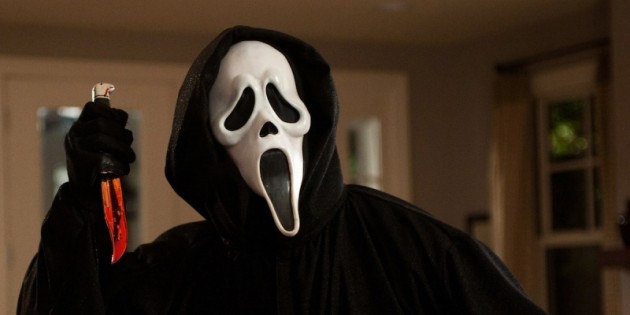
Scream
In Australian director Jamie Blanks’ 1998 addition to the ‘90s slasher cycle, Urban Legend a group of university students are stalked by a killer who kills them utilizing famous urban legends as a blueprint. The film spends ample time showing the characters’ knowledge of these urban legends. The killer relies on an expected apathy from the victims or those around them to do nothing. In Urban Legend the characters fight to avoid the tropes they readily mock. Early in the film, the students attend a lecture on urban legends where the professor (Robert Englund, the original Freddy Krueger) asked Brenda (Rebecca Gayheart) to eat Pop Rocks and drink soda. Brenda balks and while the rest of the class laughs at her, Damon (Joshua Jackson) happily obliges the professor. After pranking the class by acting as though his stomach is exploding, Damon jumps back up proving (in his mind) the falsehood of the urban legend, setting the stage for anyone who believes in them to be simple minded.
Final Girl Natalie (Alicia Witt) is weary from the get go when she learns of the first kill, Michelle (Natasha Gregson Wagner). Michelle and Natalie were friends in high school but drifted when they caused the accidental death of a driver by tricking him with the gang initiation urban legend causing him to crash his car. Throughout the film, death surrounds Natalie as the recognizable faces of her friends continue to perish around her. It is not until the moments before the climax of the film that Natalie reveals her past and her responsibility in the death of the motorist to her love interest Paul (Jared Leto) and in doing so attempts to make amends for her past misdoings. It is Natalie’s sins that have returned to confront not only her, but her friends as well.
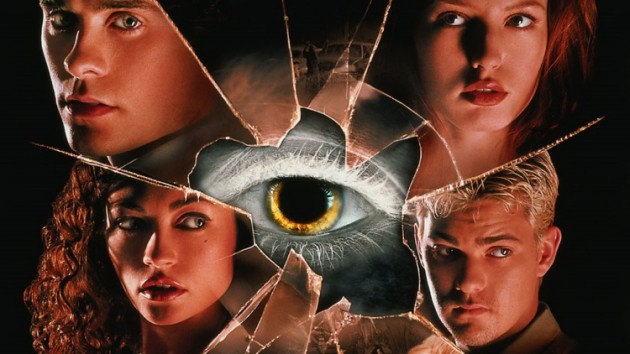
Urban Legend
Urban Legend sees Natalie deny her own knowledge of the modern pieces of folklore, which in turn prevents anyone around her from believing her suspicion of the pattern forming around her. From her own experience she knows, in a sense at least, that urban legends are very real and very deadly. From the experience in the lecture hall onwards, Natalie denies her own history which in reality set the events of the film in motion. She must accept the accountability in order to face the killer who is intent on making her pay.
Halloween: H20, also released in 1998, may share the most DNA with Scream. Beyond being produced by Dimension Films and Kevin Williamson the creative team, led by director Steve Miner who previously helmed Friday the 13th Part II (1981) and Friday the 13th Part III (1982), were able to successfully update one of the original slasher films, Halloween, with the new rules. After Halloween 2 (Rick Rosenthal, 1980) which saw the Final Girl from the original film Laurie Strode (Jamie Lee Curtis) return to face killer Michael Myers again, a third film which had nothing to do with the Myers mythos, the series focused heavily on the stoic evil of Myers with the only other constant thread being the presence of Dr. Loomis (Donald Pleasance) across the remaining films. For Halloween: H20, the creative team brought back Laurie Strode to face down the force that has haunted her and finally confront it.
In Halloween: H20, Laurie Strode has changed her name, started over and is raising a teenage son on her own while running a private school. A functioning alcoholic, Laurie cannot escape the demons of the past. She embodies much of what Clover set out when she defined the traits of the Final Girl and in H20 we can see the toll that title has taken on her. Clover explains the ending of a slasher thusly: “gender transference … the moment at which the Final Girl is effectively phallicised is the moment when the plot halts and the horror ceases. Day breaks, and the community returns to its normal order” (Carol Clover, p. 50). Clover suggests that when the Final Girl gives the seemingly damning blow to the killer, the masculine traits she has used to survive evaporate and she returns to a feminized state, signaled by the Final Girl dropping her weapon and being rescued by a male or authority presence (such as Dr. Loomis or the police). As seen in Scream, Sidney does not drop the weapon but rather picks up the more effective weapon, the gun. Halloween: H20 depicts the fractured life Laurie has led since dropping her weapon in the original film.
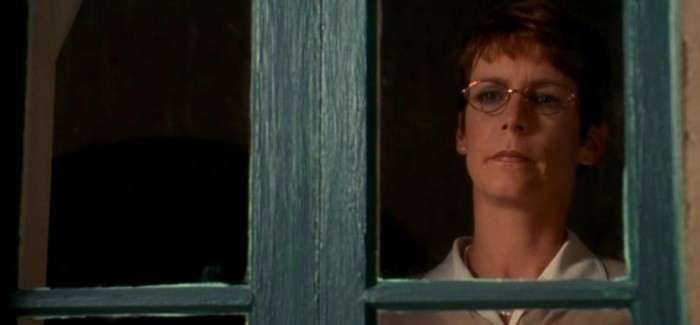
Halloween: H20
Halloween: H20 offers Laurie not only another fight with her murderous brother but also another chance to pick up a weapon and end her narrative on her terms. After a blood bath and fight which sees Laurie utilize some of the same tactics as Sidney (i.e. hiding and surprising the killer, rendering the audience’s gaze the same as the killer’s for several moments) the police arrive and everything seems to be returning to normal, Laurie highjacks the ambulance which carries Michael’s body with an axe in tow. Sure that he is not truly dead Laurie crashes the ambulance which results in Michael being pinned against a tree, unable to move. He reaches out to his little sister; Laurie regards him for a moment before bringing the axe down on his neck ending her uncertainty and fear. The screen cuts to black and the credits begin to roll. In this film at least 5 , Laurie has ended her brother’s reign of terror.
Geoffrey Wright’s Cherry Falls was barely released in 2000. After garnering substantial hype as a new slasher which truly set out to break all the rules and taboos, it was shelved by its studio mainly due to its violent and sexual content in the wake of the Columbine murders and only saw a quiet video release. 6 Set in the aptly named town of Cherry Falls a killer begins to strike, targeting the virgins of the local high school. Final Girl Jody (Brittany Murphy) is dumped by her boyfriend at the beginning of the film for not having sex with him. As the local police, led by Jody’s father Sheriff Marken (Michael Biehn), figure out the profile of the killer Marken urges his daughter to have sex, eschewing the ‘good girl’ values Jody was raised with.
Cherry Falls inverts the slasher structure by having the marker of death be the very thing meant to ensure a character’s survival (in Randy from Scream’s estimation, though there are many slasher victims who do not adhere to this rule) be their downfall. The marker of virginity as a death warrant comes from a brutal sexual assault which occurred in the previous generation which saw a local high school student raped by popular members of the senior class. The killer scrawls “virgin” on the victim’s flesh forcing the police to encourage the high schoolers to lose their virginity. In essence, the killer forces the perpetrators of the original crime (Sheriff Marken and, the principal Sisler) to engage in a social taboo of teenage sexuality. In the final rampage of the film, the killer attacks the sex/orgy party that the students have thrown together in hopes of saving their own lives. The film actively explores the taboos around teen sex, particularly female desire seen most clearly when Jody approaches her ex-boyfriend midway through the film and initiates some kinky foreplay he simply can’t keep up with her. In the most effective scene in the film at the party before the killer attacks, the young women are shown to more level-headed and sexually knowledgeable than their male counterparts highlighting yet another trend within the 90s slasher cycle, that female sexuality is more thoughtful yet no less interested than the young men. This scene problematizes the notion as women as keepers of sexuality and men as perpetually horny. The young women of these films are made gravely aware of the responsibilities risks associated with sex marking them as more mature and thoughtful about their desire, while the young men can only guess and hope what awaits them, playing at the responsibility of adulthood.
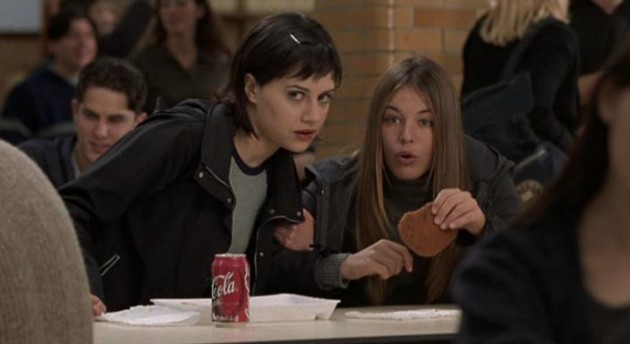
Cherry Falls
Scream 4 (2011) sees Sidney return to Woodsboro where a new killer stalks and kills the new generation of teens in the town. While Sidney grapples with her own responsibility as her niece seems to be the killer’s newest target, she cannot escape her own role in the murders. Wes Craven and Kevin Williamson finally figured out what to do with the Final Girl they helped create; instead of running from horror, Sidney runs towards it fully aware of the ritualistic role she must play in order to end another chapter. Sidney’s journey, alongside the other Final Girls of the ‘90s slasher cycle, examines what happens when archetypes and tropes are adhered to too closely. While the Final Girls of the original slasher offer portrayal of strong female characters, the ‘90s slasher cycle examined the inner workings of a Final Girl. What happens when they are the root of their own trauma? How far do they have to be pushed in order for them to fight back? What happens after the killer dies? Each of these films seeks to answer these questions to varying degrees offering a variety of answers – where some Final Girls excel; others stumble mirroring the values of third wave feminism of individuality. In the ‘90s, the slasher film was updated to reflect the values and concerns of the young women who were dominating the market and handing them back their weapon.
Works Cited
British Library, “Riot Grrrl” http://www.bl.uk/learning/histcitizen/21cc/counterculture/doityourself/riotgrrrl/riotgrrrl.html
Clover, Carol. Men, Women and Chainsaws: Gender in the Modern Horror Film (New Jersey: Princeton University Press, 1992).
Ebert, Roger. Scream Movie Review http://www.rogerebert.com/reviews/scream-1996.
Susan Faludi, Backlash: The Undeclared War Against American Women (New York: Three Rivers Press, 1991).
Fisher, J.A. Today’s Feminism: A Brief Look at Third-Wave Feminism https://beingfeministblog.wordpress.com/2013/05/16/todays-feminism-a-brief-look-at-third-wave-feminism/
McDermott, Maeve. The Girl Power Philosophy of the Spice Girls http://tvblogs.nationalgeographic.com/2014/06/20/the-girl-power-philosophy-of-the-spice-girls/
Mulvey, Laura. “Visual Pleasure and Narrative Cinema” in Feminisms: An Anthology of Literary Theory and Criticism, Robyn R. Warhol, Diane Price Herndl, eds. (New York: Rutgers University, 1997).
Neale, Stephen. Genre and Hollywood (London: Routledge, 2000).
Nowell, Richard. Blood Money: A History of the First Teen Slasher Film Cycle (New York, Continuum, 2011).
Muir, John Kenneth. Horror Films of the 1980s (Jefferson, NC: McFarland, 2012).
Rieser, Klaus. “Masculinity and Monstrosity: Characterization and Identification in the Slasher Film.” Men and Masculinities: Vol 3, No 4, April 2000).
Shary, Timothy. Generation Multiplex: The Image of Youth in American Cinema since 1980 (Austin: University of Texas Press, 2002).
Notes
- Amy Heckerling’s Clueless (1995) proved that films made for young women could not only earn staggering box office revenue, but offer fallible and engaging female protagonists that through the film’s mise en scène could also influence attitudes, fashion, and spawn many more films for the same audiences. ↩
- Such as Nancy’s (Heather Langenkamp) cleavage on the A Nightmare on Elm Street poster. ↩
- As seen in the Halloween poster’s which feature Laurie’s (Jamie Lee Curtis) contorted face, mid-scream. ↩
- While these films did fail to recoup significant box office resulting in the ends of the franchises in their original incarnations. ↩
- The film’s sequel Halloween: Resurrection (2002) undoes this ending. ↩
- In February 2016, Shout Factory announced a special edition Blu Ray release of the film. ↩



